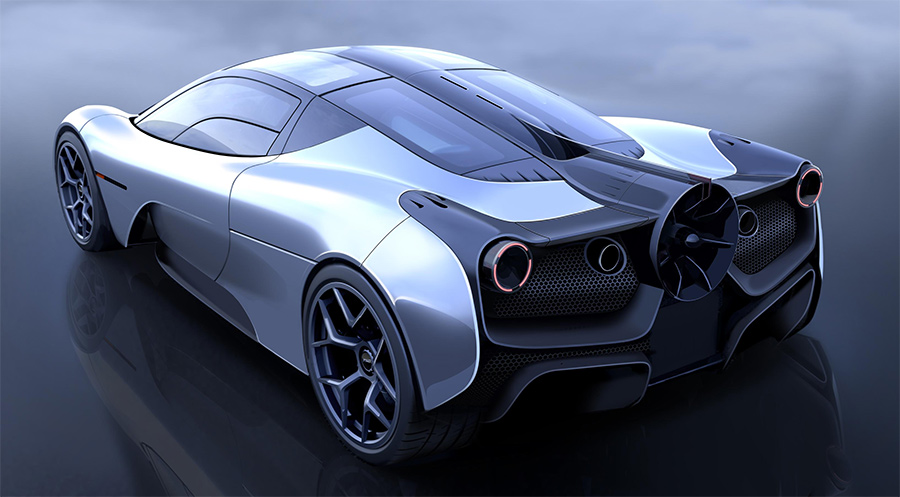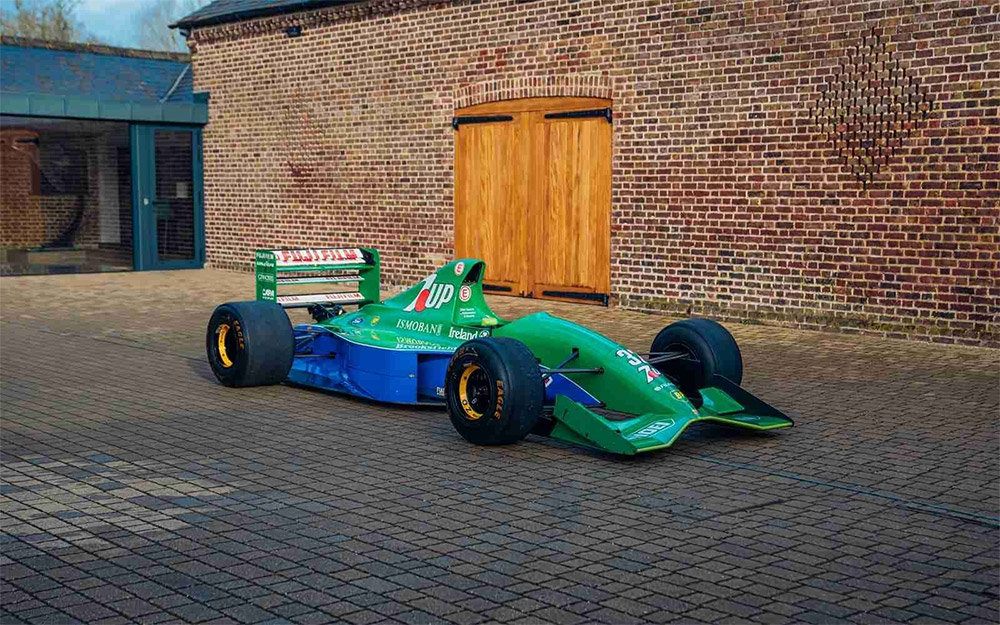Gordon Murray Automotive (GMA) is partnering with the Racing Point Formula One Team to further develop and test the aerodynamics of its forthcoming T.50 supercar. According to Professor Gordon Murray, the driver-focused new model will have the most advanced and most effective aerodynamics ever seen on a road car.
In addition to utilising the race team’s advanced rolling-road wind tunnel at its Silverstone (UK) headquarters, GMA will gain insight and expertise from Racing Point’s highly-experienced engineers.
The announcement comes as GMA reveals the first official image of the T.50 supercar ahead of its global unveiling – set for May 2020. The rendering shows the purity and drama of the T.50, which has been penned by Professor Gordon Murray and the design team at Gordon Murray Design.
Contrasting with the clean lines of the T.50 body, perhaps the most notable feature of the exterior is the rear-end, which is dominated by a 400mm ground-effect fan – part of a unique airflow management system. Coupled with active underbody aerodynamics and dynamic rear aerofoils, the revolutionary aero system enables the T.50 to achieve considerably more aerodynamic performance and control than a conventional ground-effect supercar contributing to an unrivalled driving experience.
The T.50 features six different aero modes that optimise the car for different scenarios to balance traction and outright performance. The most extreme – Vmax Mode – combines motorsport slipstream technology, extra power from a 48-volt integrated starter-generator, and ram induction to boost power to 700hp.
The announcement comes as customer allocations of the T.50, priced in excess of £2 million before taxes, enter their final phase. The majority of the exclusive production run of 100 cars has already been allocated to automotive enthusiasts. The supercar has generated demand from a wider than expected global customer base, with a significant number heading to customers in the USA and Japan.
Weighing just 980kg, the T.50 will deliver the purest, most driver-focused performance and dynamics of any road car. The car’s bespoke Cosworth V12 will be the highest-revving road car engine ever made, capable of an extraordinary 12,100rpm.
The rear-wheel drive T.50 features Murray’s favoured three-seat layout, with the driver benefitting from a central ‘jet-fighter-style’ driving position. Aligned with Gordon Murray’s claim that the T.50 could be the pinnacle of great analogue supercars, the driver-centric analogue controls are positioned to provide the ultimate, highly-intuitive, and totally-immersive driving experience.
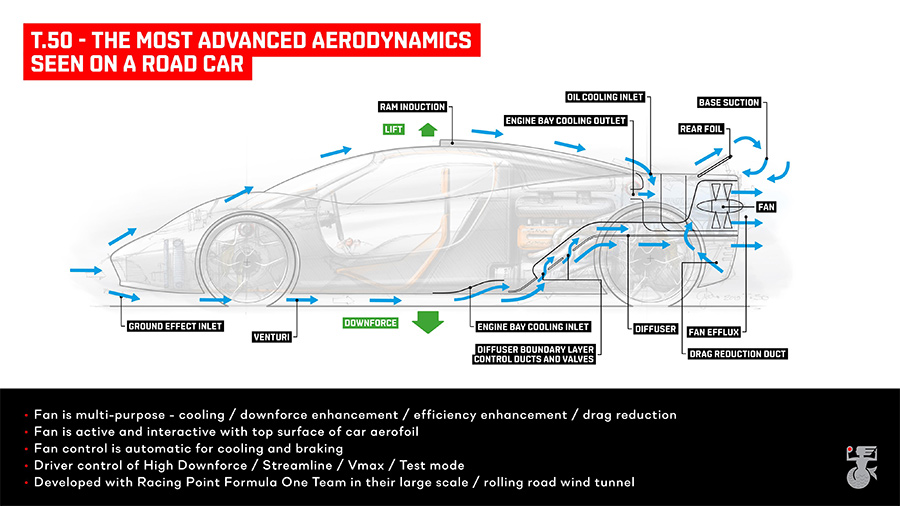
Racing Point Formula One aerodynamics partnership
The Racing Point Formula One Team rebranded from Racing Point Force India earlier this year, under the leadership of Canadian businessman Lawrence Stroll. The Racing Point HQ in Silverstone (UK) is the hub for all of the race team’s design, R&D, component manufacture, and its race car production.
The partnership with Gordon Murray Automotive will see the T.50 move from software-based aerodynamic testing (via computational fluid dynamics) to physical testing in the Racing Point rolling-road wind tunnel from early next year. Few facilities in the world can offer T.50 such sophisticated, performance-focused aerodynamic testing capabilities and allow the use of a 40% scale model.
Team owner, Lawrence Stroll, said: “Working on the T.50 with Gordon Murray Automotive is an honour and a privilege for everyone at Racing Point. Our aerodynamicists will utilise our wind tunnel to harness the very latest Formula One expertise and experience for the T.50 project, ensuring Gordon’s revolutionary fan concept delivers its full potential. I have admired the design and engineering skills of Gordon Murray since his earliest days in Formula One, so it is a personal pleasure to support this project, which truly rewrites the rulebook on aerodynamics.”
Professor Gordon Murray CBE, Chairman of Gordon Murray Group, said: “Formula One remains a deep passion of mine, so partnering with Racing Point to develop the T.50 is hugely exciting. I’ve dreamt of delivering a road car with a ground-effect fan since I designed the Brabham BT46B F1 racing car in 1978. The system on the T.50 is much more sophisticated than the Brabham’s and will benefit enormously from Racing Point’s expertise and resources.”
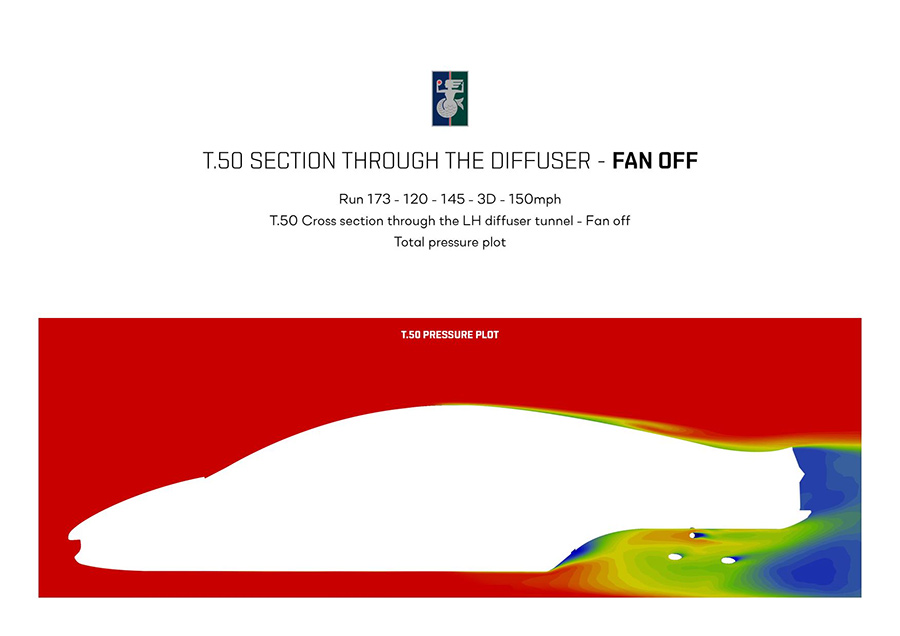
The most advanced aerodynamics of any road car
The T.50 takes road-car aerodynamics to entirely new levels with Murray’s ground-breaking design significantly enhancing the supercar’s ground-effect capabilities. To achieve unmatched aerodynamic performance, the car’s 400mm fan rapidly accelerates air passing under the car, forcing it through active boundary-layer control ducts that form part of the rear diffuser.
The fan and its associated ducting system build on conventional ground effect systems by actively helping control both the underbody and overbody airflow ensuring that both airflow systems interact to ensure absolute control of the enhanced aerodynamics and improve the car’s performance.
The underbody airflow system allows Gordon Murray Automotive to achieve purity of design for the car’s upper surfaces, with air flowing over the top of the car undisturbed by unsightly vents, ducts, or flaps. At the rear, air is channelled down through vents to cool the powertrain oil. Also, a pair of active aerofoils at the rear of the car contribute to downforce or shedding drag, as required.
The fan’s design and underbody ducting does away with the need for a ‘skirt’ – like that of the BT46B Fan Car – while the vertical inlet ducting ensures no road debris passes through the fan. The novel system has multiple benefits, enhancing engine cooling, boosting downforce and maximising efficiency. The various fan functions, combined with the underbody ducting and activation of the rear aerofoils, are controlled seamlessly as part of the car’s six distinct aero modes.
Two modes operate without any driver input. ‘Auto Mode’ is the car’s default, which optimises use of the rear aerofoil, fan and underbody diffusers in response to speed and driver inputs. When high levels of deceleration are required, ‘Braking Mode’ deploys the rear aerofoils automatically and the fan operates simultaneously at high speed. This function doubles the levels of downforce, enhancing stability and grip, and enables the T.50 to pull up a full 10 metres shorter when braking from 150mph.
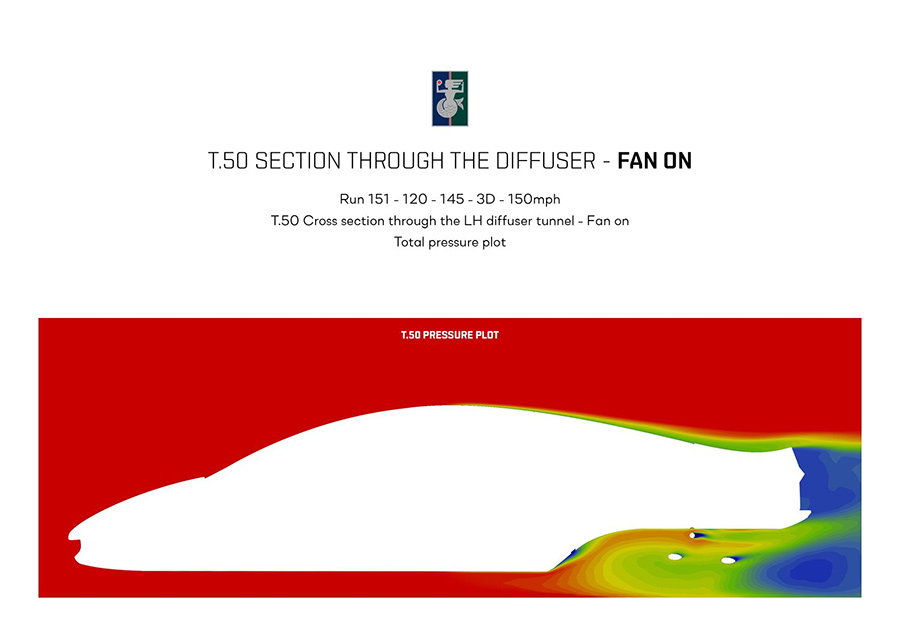
The other four aero modes are driver-selectable. ‘High Downforce Mode’ delivers enhanced traction – where the fan and the aerofoils work together to increase downforce by 30%. At the flick of a switch, the driver can shift to ‘Streamline Mode’, to reduce drag by 10% and boost straight-line speed, while also reducing fuel consumption and downforce. This mode closes the underbody ducts and sets the fan to operate at high speed to extend the trailing wake of the car, creating a ‘virtual longtail’.
When maximum velocity is required, the ‘Vmax Mode’ can be deployed by the driver at the push of a button. This utilises the same aerodynamic configuration as ‘Streamline Mode’, but adds an extra boost of around 30hp for up to three minutes by adding power to the crankshaft from the car’s 48-volt integrated starter-generator.
Finally, ‘Test Mode’ operates when the car is at standstill to demonstrate the capability of the aero system.


